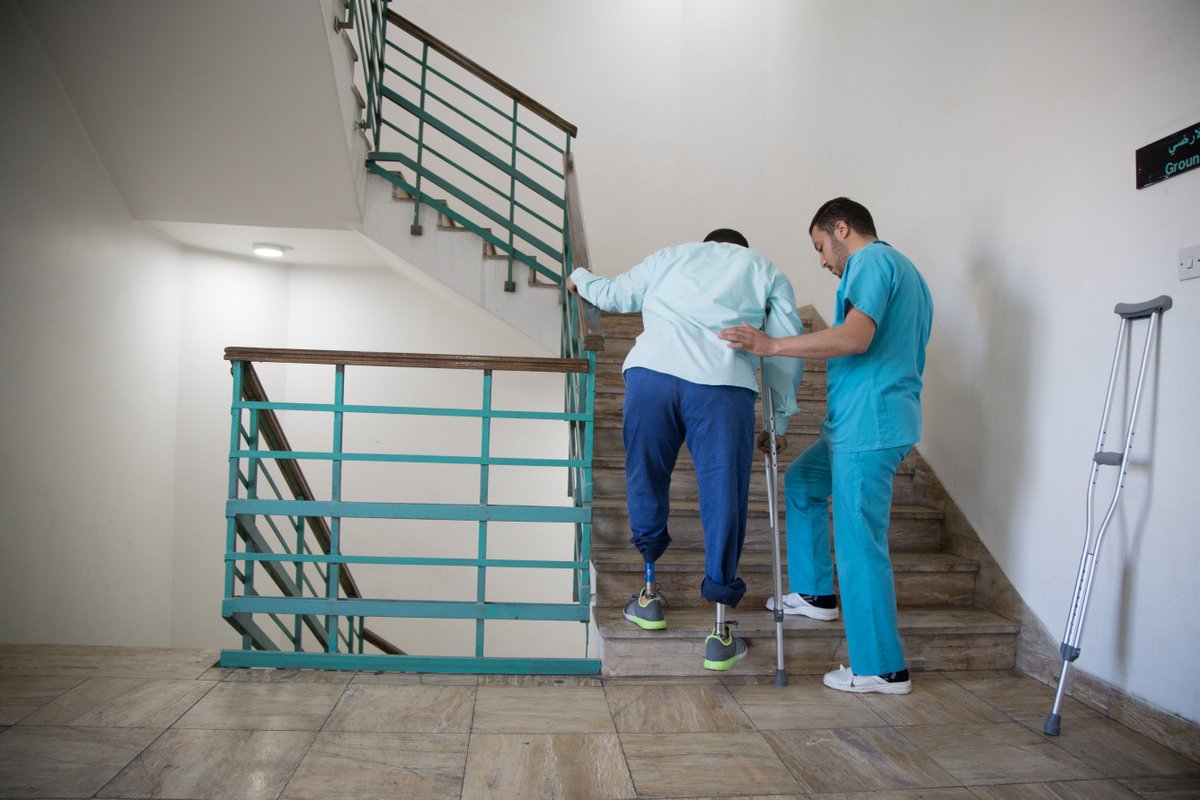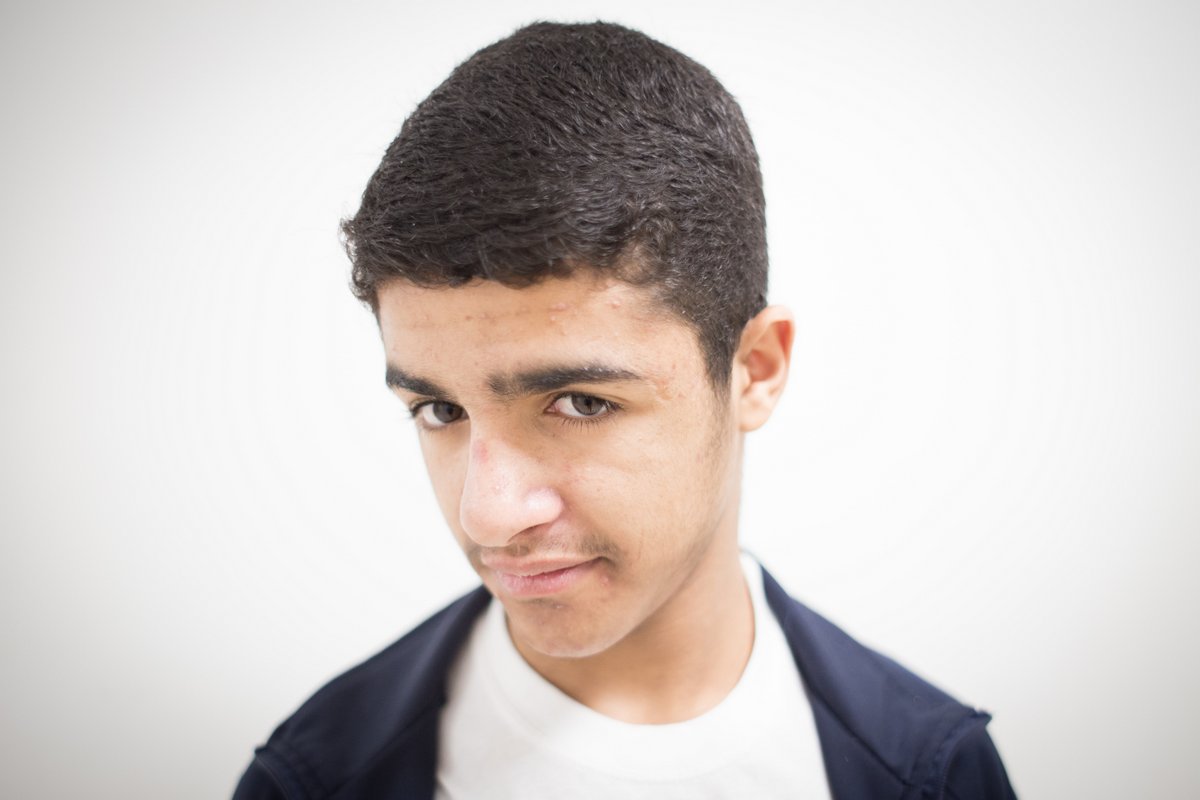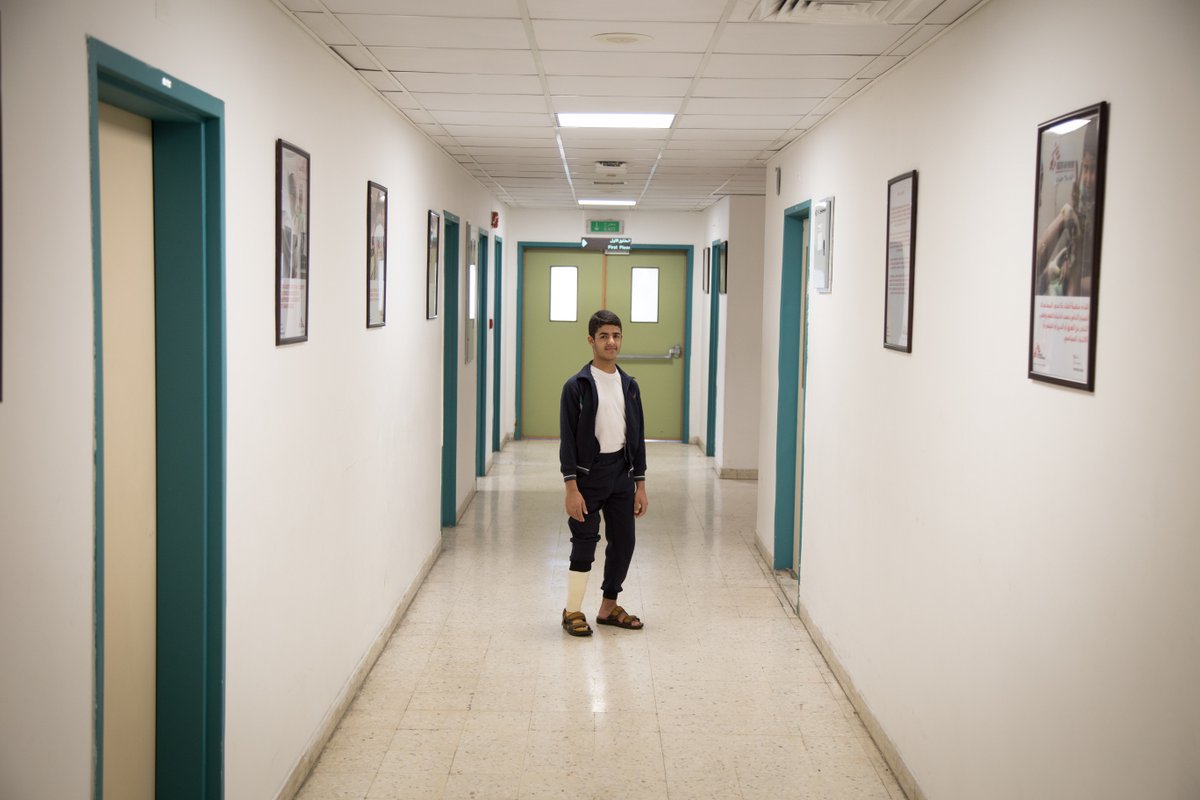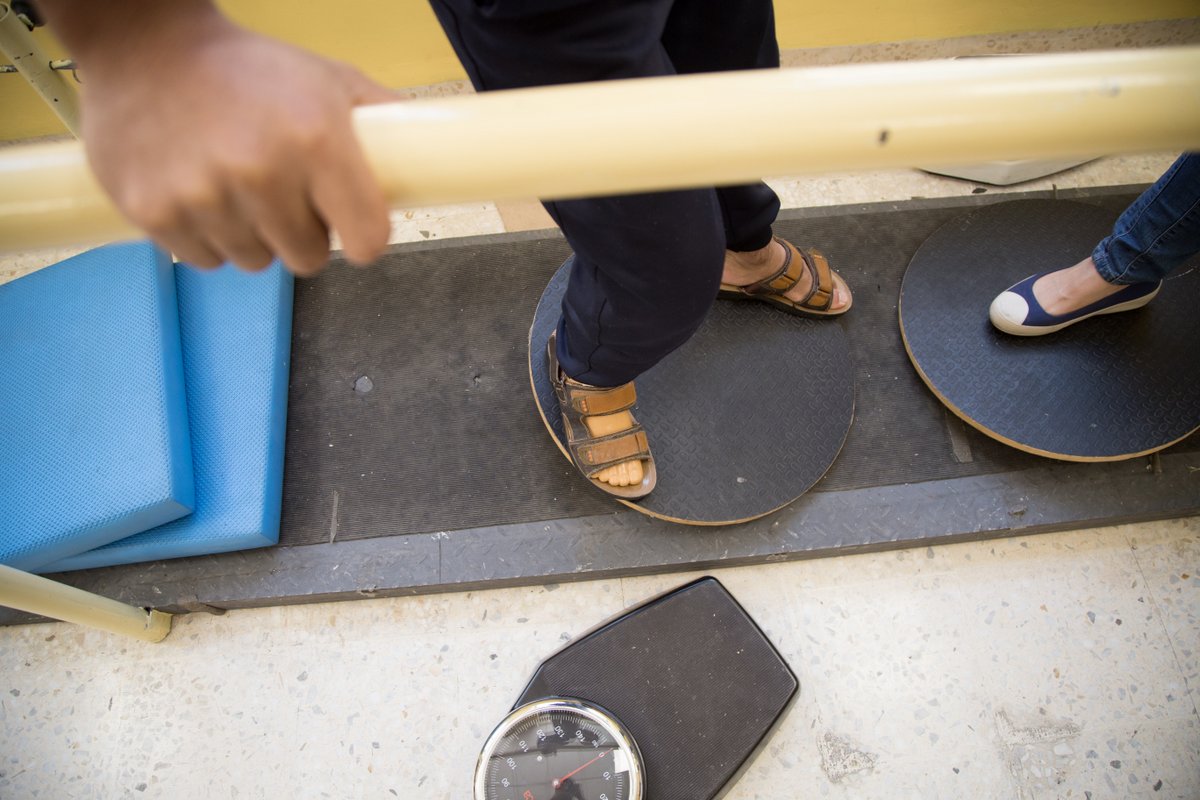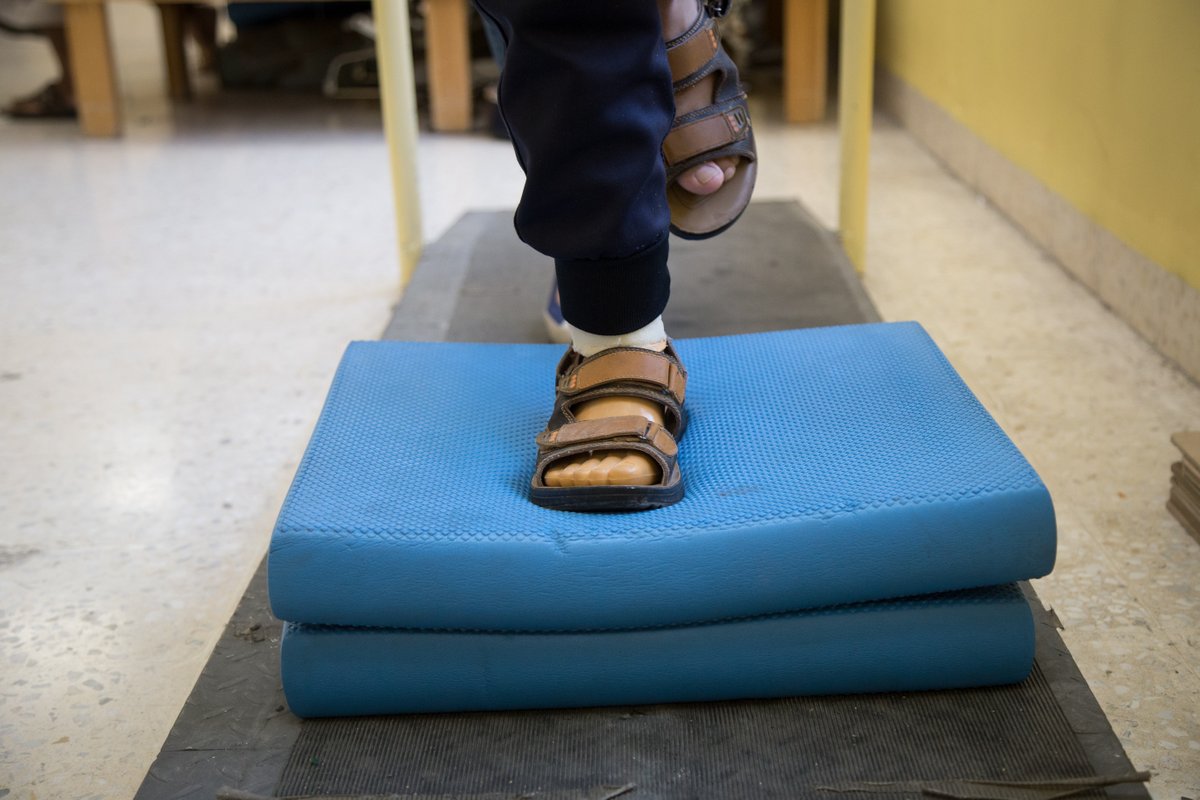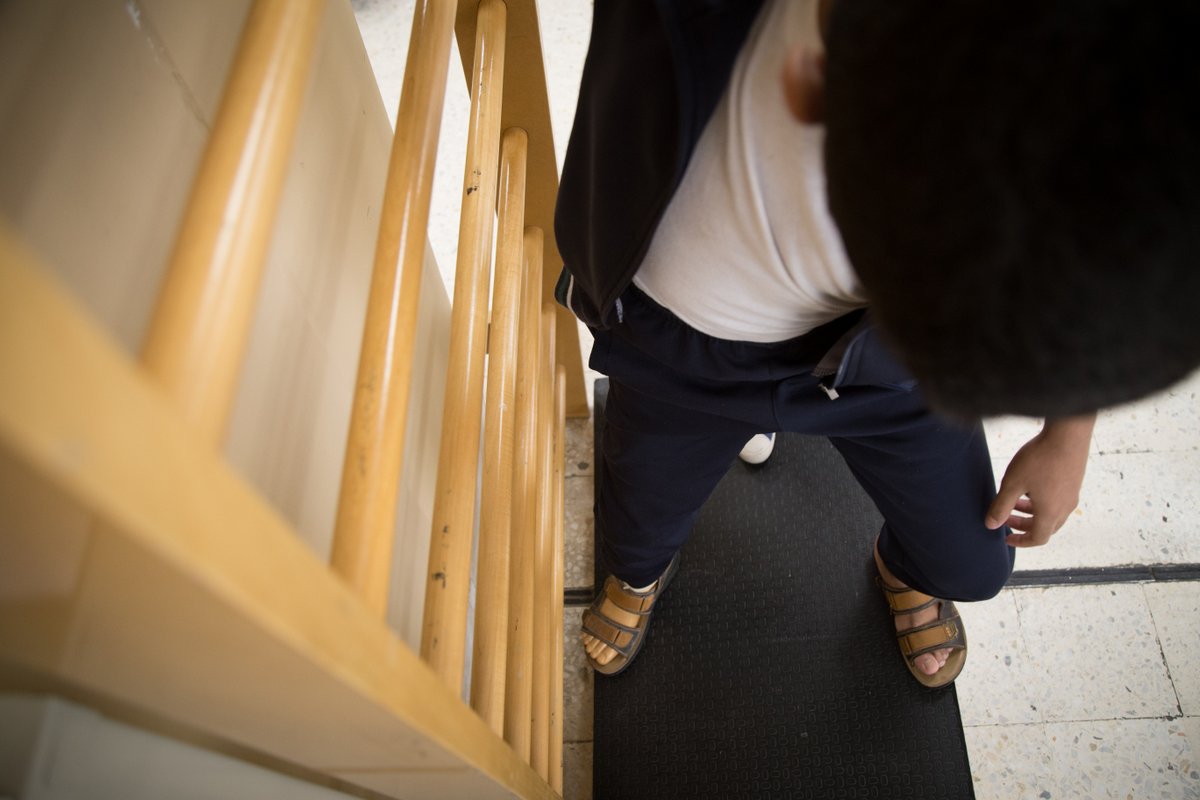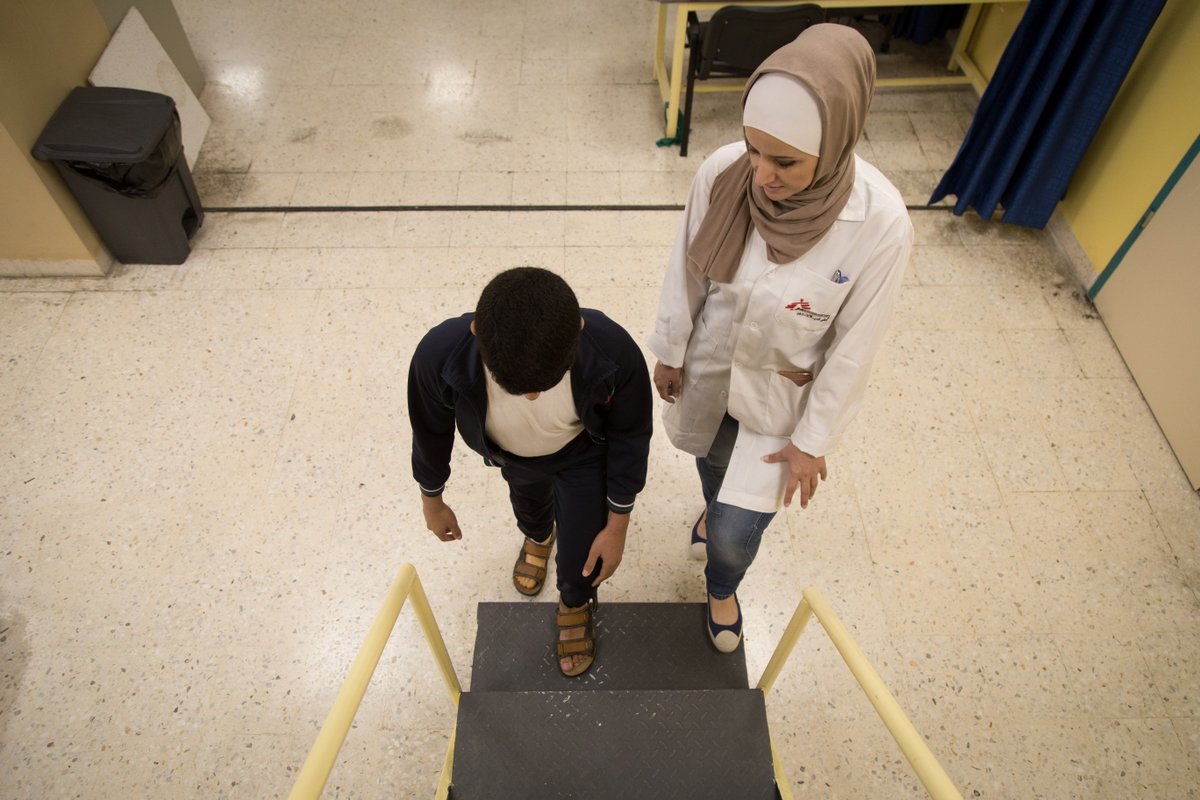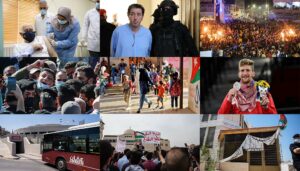You could be leaving your house to fetch water when a shell from the war in your country hits you. You could be a child playing in the household garden when a snake bites you. Either way, you do not return home the same as you left it. You lose a limb, maybe more, and people around you think that this will change your life forever.
In al-Mowasah Hospital, run by Doctors without Borders (MSF) in Amman, we met 16-year-old Riyad and 35-year-old Yousef. MSF established al-Mowasah Hospital in Amman in 2006 to provide reconstructive surgery for injured people from Iraq. The hospital later expanded to provide treatment to those wounded by war in Gaza, Syria, and Yemen as well.
Both Riyad and Yousef came from Yemen after suffering injuries that led to amputation, and had been fitted with prosthetic limbs. Riyad has finished his rehabilitation to learn how to use his prosthetic leg, and can soon return to his normal life in Yemen. Yousef is still working towards that stage, especially as he has been fitted with two prosthetic legs.
Riyad: Nothing stops play
Everyone in al-Mowasah Hospital knows and loves Riyad. Laughing in a physical therapy session, helping and encouraging others, his adaptation to and ease with his prosthetic leg seems clear.
Riyad was three years old when a snake bit him as he was playing by his family’s home in Yemen. At first, his family treated him at home. Then, when Riyad’s foot swelled up the next day, they went to the nearest pharmacy for anti-inflammatory drugs.
For seven years following the injury, Riyad’s foot was swollen, the bone protruding more and more. He continuously took anti-inflammatory drugs, his foot bandaged, until his family was advised to go to MSF.
Riyad was ten years old when he started going to MSF in 2011. The doctors told him that part of his leg needed to be amputated, after it had been infected multiple times.
«The doctor told me they wanted to amputate my leg» Riyad tells 7iber. «I said okay, because I was tired of it. I said, ‘okay, amputate the thing.’»
Riyad came to Amman in 2012. He underwent an operation to amputate half his leg, and was fitted with a prosthetic leg. After seven months of treatment, he returned to Yemen.
Living with a prosthetic leg was not easy for Riyad, a child who wanted to live a normal life. What he cared about most was to play like everyone else, even if the rocky nature of the area could break his prosthetic leg. He played every day. One day, Riyad couldn’t resist his desire to swim in a pool of rainwater that was filled with small rocks. He injured his amputated leg once more, and the wound became infected.
Riyad went back to his doctor, who told him another part of his leg needed to be amputated.
«I cried at the doctor’s office in Sanaa» says Riyad. The second amputation was more difficult for him, psychologically, but he returned to Jordan in 2014 and a doctor there was able to convince him it was necessary to amputate his leg.
«He told me, ‘if it were up to me, I wouldn’t cut off your leg’» says Riyad. «He said it was like cutting off his own skin, so I relaxed with him and was convinced.»
Riyad underwent a second operation, and was fitted with a new prosthetic leg.
«After the operation, I forgot and went to stand on it» says Riyad. «I felt like my leg was still there. But after I put on the prosthetic, I knew that my leg had been removed.»
He returned to Yemen, and his life started to return to normal. «When people saw me, they thought that it was fine» says Riyad. «But at times, I hated having a prosthetic leg. I was in pain…then it broke because I’m a troublemaker, and I walk a lot. I would see children playing and join them.»
This past April, Riyad returned to Jordan once again to be fitted with a new leg, which required him to undergo a new operation to trim the bone because he had grown. This time, he was given a mobile ankle, to fit in with his desires to move a lot.
Riyad stands on a walking device. A round, moving platform is under his feet. His physical therapy requires him to get on it and move in a circle. At first, it was difficult for Riyad to move his artificial foot in a circle, but in minutes he understood the mechanism and both feet started to move in the right way. To the observer, there is no clear distinction between his right, artificial foot, and left, natural foot.
Lina Ali, the MSF physical therapist in charge of Riyad’s case, says this exercise enables him to move on unstable surfaces. She describes the level that Riyad has reached as very advanced, as a result of his quick acceptance and adaptation to the amputation of his foot, and his having been outfitted with an artificial leg at an early age.
Basic treatment, she adds, is to fit a fixed limb. But Riyad loves to play, and in Yemen’s rugged landscape, a non-mobile leg would stop moving if it collided with a rock. That is why he was fitted with a moving ankle.
The artificial ankle moves according to how the limb itself is moving, which enables Riyad to control it. «We put it on him and trained him so he feels as though his leg is there, and puts equal weight on both sides» says Ali. «Riyad has progressed and goes on the treadmill and mobile surfaces now.»
The ease of Riyad’s movements when using his prosthetic limb was clear during Riyad’s conversation with others receiving physical therapy at the hospital. He encourages one fellow patient, helps another. His physical therapist views this as a success in coming to terms with his prosthetic leg and continuing his normal life.
When 7iber met Riyad, he was preparing to return to Yemen to continue his ninth-grade studies and prepare for the ministerial exams set for the end of the school year. He says that movement has become natural for him, and that he feels no difference in his body.
Yousef: Walking on two prosthetic legs and ignoring pitying looks
On two artificial legs, 35-year-old Yousef Muqbal Salem climbed the Mowasah Hospital stairs under his physical therapist’s supervision. This was the first time he climbed stairs since he lost both his feet since 2015.
With every step, it became more difficult. Pain and effort were clear on Yousef’s features, but in the end he went up and down the stairs, and then sat to tell 7iber his story.
In 2015, Yousef left his house in Aden to collect water after being bedridden for five days with a fever. But just a few steps from the door of his house, a shell fell and injured him, as a result of the ongoing war in Yemen since 2015.
At that moment, Yousef knew that he lost his left foot. «I saw there was a bit remaining of my left foot, and said, thank God» says Yousef. «I didn’t look to the right.» After that, he lost consciousness.
Yousef was taken to an MSF hospital, where the next day he underwent an operation to remove his left leg from the knee down. The doctors told him that his right foot was paralyzed because the nerves were torn, and they would try to treat it. But one week later, after six operations on his foot, Yousef’s doctor told him that his right leg needed to be amputated as well, at the thigh.
Before his injury, Yousef was a married father of two children and had worked at an embroidery workshop in Aden for twelve years. He had moved to Aden city from Abyan governorate, to which he returned with his family after he got out of the hospital.
Yousef continued to embroider from home after his injury and insisted that his social life continue. He went out to the street and talked to people, even though he spent two years without prosthetic legs.
«On the first day […] I went out to the market, and there were people looking at me with pity,» says Yousef. «When people look at you normally, you feel relaxed. When you see people looking at you with pity, you would never leave the house. You try to get used to life more.»
After two years in a wheelchair, Yousef came to Jordan this past March to be fitted with two prosthetic legs. By this May, Yousef had undergone 24 surgeries on his feet. Then, he began walking on his new legs.
«This is a blessing,» says Yousef. «It was a joy to walk after two years.»
Yousef continues to receive physical therapy to enable him to walk on his own. «I must walk without a cane» says Yousef. According to him, that could take two more months.
Yousef says that he had no trouble in his perception of his feet, nor in believing what happened to him. «I believed what happened, but on the day I was injured, I felt as though I had been living in a dream, and woke up from it» says Yousef. «It was like my first life was a dream that had ended. He adds that he feels the presence of two normal legs, now that he can move them, enabling him to continue his life once more.
The rehabilitation process for amputees begins after the amputation operation, before fitting the prosthetic limb, MSF physical therapist Ahmad al-Dardour explains to 7iber.
In the days following the amputation, the physical therapist begins to visit the patient to deal with «phantom limb» or the patient’s feeling that their foot is still there. This period continues for months.
During that time, the therapist uses many tools, including bandages, braces and reflecting a mirror onto the amputated limb to convince the brain that it is not there. During the day, says al-Dardour, the patient does not suffer from phantom limb like in the evening and night, when they think more, «and the nerve impulses to the limbs increase, and so does the sensation of phantom limb.»
In addition to treating phantom limb, the therapist does different exercises before fitting the prosthesis. These include breathing and muscle exercises to prevent atrophy, motion exercises to preserve joint movement, and exercises to strengthen muscles and enable the remaining limb to carry the prosthetic limb, which isn’t light, al-Dardour says.
Later, the therapist begins the patient’s rehabilitation, as they learn to walk or use the artificial limb unaided, and manage it regardless of whether they gain or lose weight.
The steps and time needed to help a patient adapt to the new limb differ from patient to patient. The therapists 7iber met in sessions with patients agree that the final result they expect is for their amputee patients to become independent, carrying out their daily activities by themselves, without feeling any handicap.
*This report was completed with the collaboration and support of MSF.
